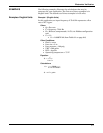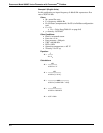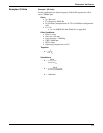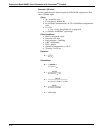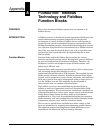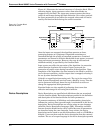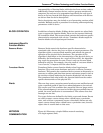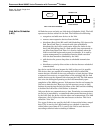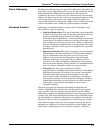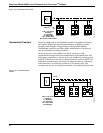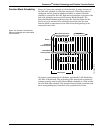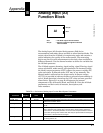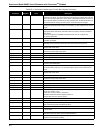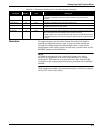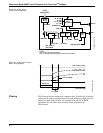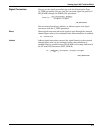
A-5
FOUNDATION
TM
fieldbus Technology and Fieldbus Function Blocks
Device Addressing Fieldbus uses addresses between 0 and 255. Addresses 0 through 15 are
reserved for group addressing and for use by the data link layer. For all
Fisher-Rosemount fieldbus devices addresses 20 through 35 are
available to the device. If there are two or more devices with the same
address, the first device to start will use its programmed address. Each
of the other devices will be given one of four temporary addresses
between 248 and 251. If a temporary address is not available, the device
will be unavailable until a temporary address becomes available.
Scheduled Transfers Information is transferred between devices over the fieldbus using
three different types of reporting.
• Publisher/Subscriber: This type of reporting is used to transfer
critical process loop data, such as the process variable. The data
producers (publishers) post the data in a buffer that is
transmitted to the subscriber (S), when the publisher receives the
Compel data. The buffer contains only one copy of the data. New
data completely overwrites previous data. Updates to published
data are transferred simultaneously to all subscribers in a single
broadcast. Transfers of this type can be scheduled on a precisely
periodic basis.
• Report Distribution: This type of reporting is used to broadcast
and multicast event and trend reports. The destination address
may be predefined so that all reports are sent to the same
address, or it may be provided separately with each report.
Transfers of this type are queued. They are delivered to the
receivers in the order transmitted, although there may be gaps
due to corrupted transfers. These transfers are unscheduled and
occur in between scheduled transfers at a given priority.
• Client/Server: This type of reporting is used for
request/response exchanges between pairs of devices. Like Report
Distribution reporting, the transfers are queued, unscheduled,
and prioritized. Queued means the messages are sent and
received in the order submitted for transmission, according to
their priority, without overwriting previous messages. However,
unlike Report Distribution, these transfers are flow controlled
and employ a retransmission procedure to recover from
corrupted transfers.
Figure A-3 on page A-6 diagrams the method of scheduled data
transfer. Scheduled data transfers are typically used for the regular
cyclic transfer of process loop data between devices on the fieldbus.
Scheduled transfers use publisher/subscriber type of reporting for data
transfer. The Link Active Scheduler maintains a list of transmit times
for all publishers in all devices that need to be cyclically transmitted.
When it is time for a device to publish data, the LAS issues a Compel
Data (CD) message to the device. Upon receipt of the CD, the device
broadcasts or “publishes” the data to all devices on the fieldbus. Any
device that is configured to receive the data is called a “subscriber.”



